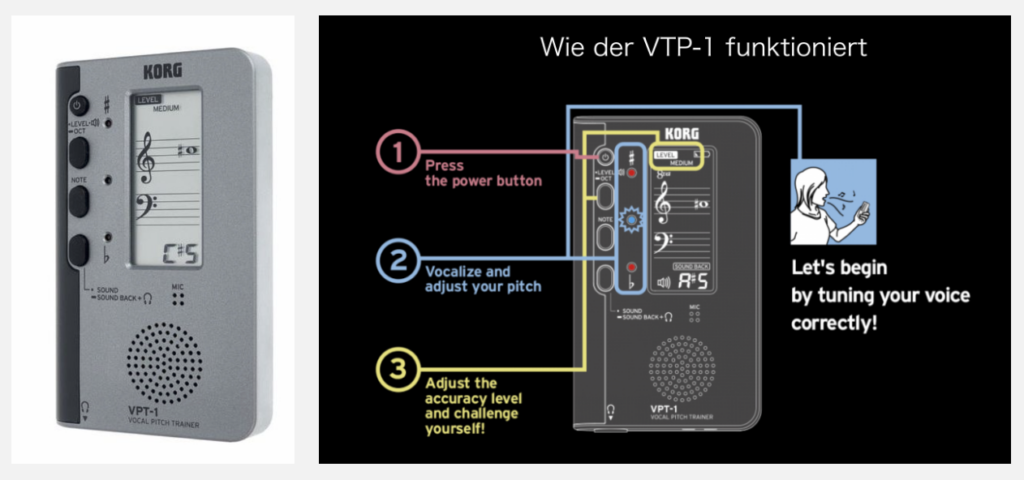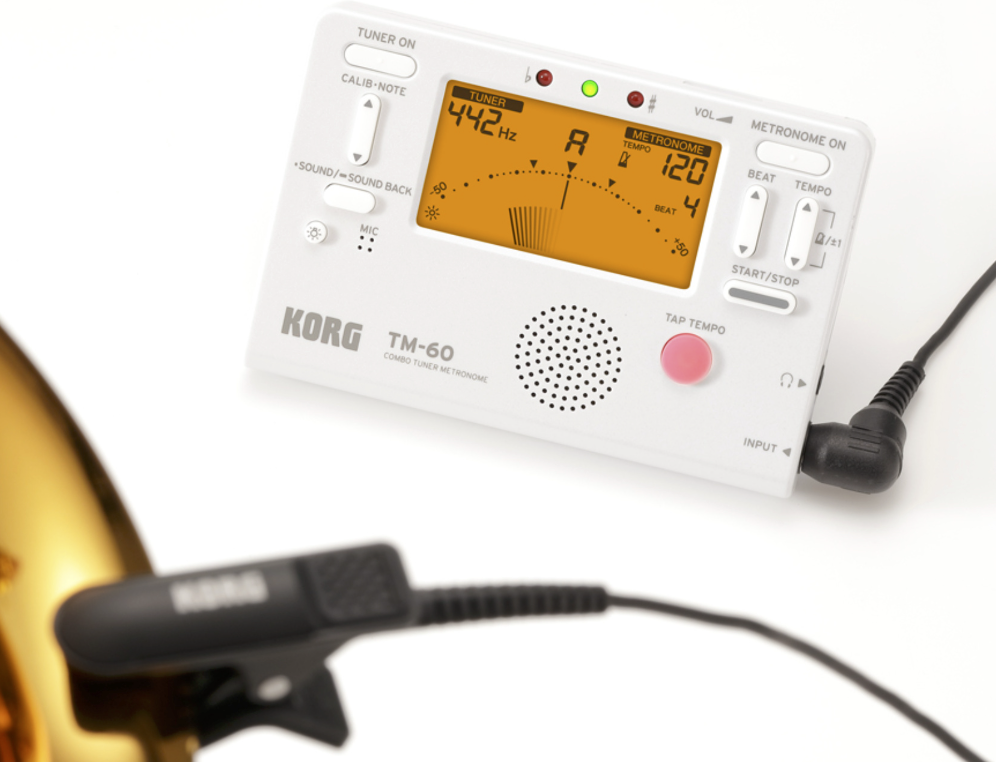To prototype my idea of a singing aid for choir rehearsals, I researched existing tools for recording and analysing singing.
Tuning Apps
An easy option is tuning apps like GuitarTuna. These apps use the microphone to capture the tones, analyse them, and display whether the pitch is correct in a simple visual format.
Clip-on Tuners
Another option is clip-on tuners, which are typically attached to an instrument. They analyse the frequency through the instrument’s vibrations. The advantage is that they focus solely on the instrument they’re attached to, unaffected by ambient noise. This is particularly useful when tuning multiple instruments simultaneously.
KORG Vocal Trainer
The Korg Vocal Trainer is a professional tool for singers. It detects the pitch of the sung note and displays it on a staff with either a G or F clef. Red LEDs indicate if the note is too high or too low, and a blue light in the centre shows when the note is correct. This trainer is excellent for improving intonation but requires a quiet environment, making it difficult to use during a choir rehearsal. A potential improvement could be integrating vibration feedback to allow intonation checks and adjustments during practice sessions.
Features:
- Display with staff notation
- ‚Sound Out‘ function with reference tone output
- ‚Sound Back‘ function for outputting the correct tone
- Octave function for different vocal ranges

Korg Clip-on Tuner:
Another device from Korg for instruments uses a clip-on system. Like the Vocal Trainer, it can output a reference tone via optional headphones or speakers and includes a metronome. This device could also be useful in a choir setting, utilising vibration and frequency analysis.

Visualisation of Intonation
Singing games like SingStar employ a simple concept for visualising whether a note is hit and the rhythm is maintained. Bars indicate how long a note should be held and its pitch relative to the target. This works well in environments where precise half-tones and four-part harmonies are not required. It provides a general sense of whether you’re singing correctly without needing to read music, which is crucial for developing a good ear.
Conclusion
Existing technology offers many possibilities but is still somewhat cumbersome for direct use in choir rehearsals. I aim to explore how these tools can be made more user-friendly and tailored to my specific idea. Balancing a simple representation of vocal performance relative to the notes with detailed error display is essential for developing a good ear and improving singing.
Prototyp preparation
For my initial attempt, I purchased a clip-on tuner typically used for string instruments. Nevertheless, I want to experiment to see if it works just as well when measuring the vibration of the vocal cords instead of the instrument body. This will be my first test to determine if it works at all.
